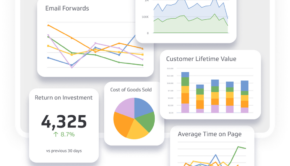10 Effective Tips for Sales Prospecting
If you work in sales, you will agree that sales prospecting is an essential aspect of the sales cycle.
And yet, it is also one of the most difficult tasks to tackle.
In fact, sales reps and their teams rank prospecting as one of the top sales process challenges.
Most sales personnel also admit that the inability to generate enough leads through prospecting remains a barrier to reaching their sales goals.

In this post, I will give you some tips that are guaranteed to help you streamline your sales prospecting.
So, what’s holding your Sales Back?
The buyers!
The truth is, the sales landscape has changed drastically over the past few years. The buyers are not as reliant on the salesperson as they were before. Thanks to the internet, they are more empowered and can research their options before contacting a sales team.
As a matter of fact, most buyers confess to doing a bit of prospecting by themselves and analyzing their needs virtually before making a purchase decision.
Of course, this doesn’t mean that sales reps are out of the picture. However, with the changes happening in the sales conversion, it only makes sense that salespeople modify their prospecting techniques to something that accurately falls in line with today’s buyer’s journey.
1. Research the Ideal Persona
One of the most significant mistakes sales reps make when identifying prospective consumers is neglecting research. They assume that every company listed in their database fits their Ideal Customer Profile (ICP) and start cold calling – without giving a thought to their unique requirements.
However, don’t nurture leads based on assumptions.
Instead, take some time to determine the ICP. List down general facts such as their age, gender, geographical location, interests, and the industries they belong to. Compare them with the top 5 consumers you have. As well as your least profitable ones.
Remember, the more detailed you make the buyer’s profile, the more effectively you can zero in on the companies/individuals that are most likely to avail your product/service.
2. Identify Meeting Locations
Start your prospecting journey by analyzing where your ideal customer hangs out? Will they prefer meeting buyers at trade shows, or are they more likely to participate in social events?
What about their digital preferences? Which social media channels do they prefer? Do they take part in any specific forum? And what about publications? Are there any particular websites that they visit often?
Identifying the locations that will give you the highest ROI will help you determine the right places to attend and the ones to forego.
3. Don’t Be Cold
Your first interaction with the prospect doesn’t have to be impersonal and cold. In fact, if used correctly, this time can be incredibly useful in maintaining a strong relationship with the consumer.
When making your first call or sending the initial email, introduce yourself in a friendly way – and avoid the elevator sales pitch. Mention any shared links you have with the prospective client. Or comment on a piece of content they shared on their social media profile. Be empathetic and ask questions.
The more warm your calls are, the better chance you will have of successfully landing a sale.
4. Be an Expert
When you are convincing somebody to buy something, you must sound like a trustworthy expert. This means that you should have complete information about the product/service you are selling and the industry you are targeting.
You also need to have complete information about the customer you are talking to. What are their requirements? Their accomplishments in the field? Their concerns?
Having this knowledge will help you reinforce your value proposition and answer any ‘why’ question the buyer may have about your offering.
5. Take Referrals
Happy customers give the best referrals. Once you have succeeded in securing a sale, ask the client to recommend some clients who would benefit from your product/service. Most of them are happy to provide referrals if they had a positive experience.
You can also ask them to be part of case studies where you gauge their experience before and after using your product. Testimonials on social media also go a long way in establishing further contact. So make sure to add some to your social media networks.
6. Make a Video
One of the most trending ways to maximize your outreach is to include a video along with your sales email. And I am not talking about corporate demo videos with ‘posed’ businessmen smiling and shaking hands in the most unnatural way possible.
I am talking about simple videos where you – the salesperson- introduce themselves and demonstrate how the product works and its benefits in a video format.
You can also invite the prospects to video calls. Yes, it may be intimidating, but video calls add a human element to your sales pitch. People will even believe you more if you use your body language and facial expressions to convey your proposal.
7. Host a Webinar
Prospects often don’t have the time to talk to you on the phone or read lengthy texts in emails. However, webinars intrigue them as it offers a unique experience when compared to the standard modules.
Host a webinar where you can discuss with other interested candidates about the problems they face. And how your particular product or service can help resolve the issue for them. You can also invite past customers to share their testimonials and experiences to establish trustworthiness further.
8. Build Your Social Media Presence
Undoubtedly, social media is one of the first places a potential buyer goes to for information about a selected product. And if you are not there, your competitors are definitely there to take your place.
Invest time on different social media accounts and share content relevant to the platform. Consumers also log in to social media networks to ask any questions or share criticism about a product. So, make sure you are proactive and responsive to their feedback in a timely manner.
9. Share Content Relevant to the Buyer’s Journey
Sales reps focus on sending content to the prospective buyer to take them down the sales funnel quickly. But do you know what type of informational material to send and when?
To answer this question, acknowledge the stage your buyer is in? Are they just learning about your company, or are they well on their way to make the final decision? Do they need more persuasion in the form of case studies and testimonials, or do you need to educate the prospect about your brand expertise?
Whether it is digital or printed, design your sales collateral in a way so that it adapts to the buyer’s unique journey.
10. Follow Up
It is sporadic to land a sale on the first call. This is why you should follow up with a prospective via email, phone call, or by sending them additional information to move the lead forward.
However, make sure you don’t bombard them with messages on the same day as your initial cold call. The general rule of the thumb in sales is to wait at least 48 hours for a response. If the prospect doesn’t respond within that time, check back casually with a ‘just checking in’ or even a ‘thank you note’ for the initial interaction.
Final Words
There you have it. The most effective sales tips for prospecting and increasing your chances of success. Remember:
“Sales is not about selling anymore, but about building trust and educating” – Siva Devaki.
Reach out to your potential customers using different approaches. Emphasis focus on gaining their trust in areas where you can demonstrate your authority and expertise. Only then will you improve the odds of securing a sale and retaining that customer for the long-term.
















